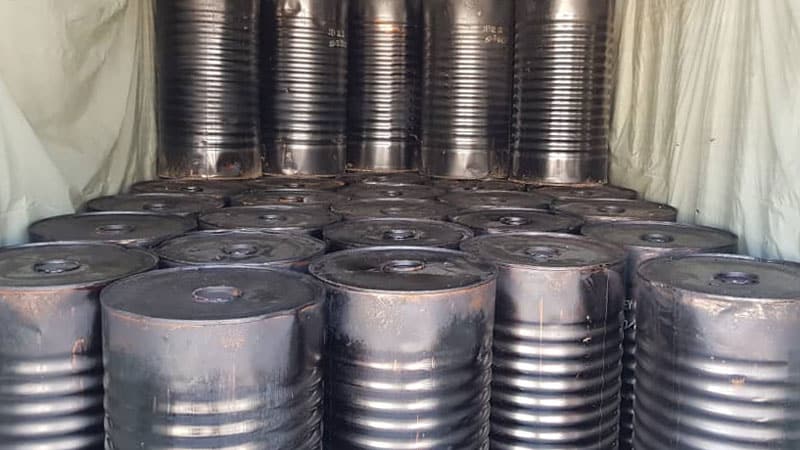Cutback bitumen refers to a group of binders created by blending penetration grade bitumen with a hydrocarbon solvent, such as paraffin or mineral turpentine. The blending process involves mixing these components, and once the solvent evaporates, the binder returns to its original penetration grade, effectively binding particles together. The term “cutback” originates from the solvent’s role in the process, as it “cuts back” or evaporates, leaving the binder to complete its intended function. The solvent, also known as the “cutter” or “flux,” plays a crucial role in this process.
Three types of solvents are commonly used in the blending process: slow-curing, medium-curing, or rapid-curing solvents, with the latter two being more prevalent in South Africa. The choice of solvent determines the bitumen’s curing rate when exposed to air, affecting its setting time. Rapid-curing solvents evaporate more quickly than medium-curing solvents. The viscosity of cutback bitumen is influenced by the proportion of solvent added—the higher the solvent proportion, the lower the viscosity. Industries requiring low viscosity bitumen, or situations where preheating bitumen for asphalt is not feasible, commonly use cutback bitumen.
To produce cutback bitumen, viscosity bitumen is mixed with organic solvents, including diesel, naphtha, diesel oil, and fuel oil, all of which have low boiling points and readily evaporate. The curing time depends on the speed of solvent evaporation, with cutback bitumen having different curing types: Slow Curing (SC), Medium Curing (MC), and Rapid Curing (RC).
Cutback bitumens, such as MC 30 and RC 250, are known for being more workable than penetration grade bitumen, requiring less heat for liquefaction and easier reshaping at lower temperatures. Notably, cutbacks offer a higher residual bitumen percentage compared to emulsions, providing more bitumen on the roadway after curing.
However, cutback asphalts pose environmental challenges due to the volatile chemicals evaporating into the atmosphere. They also require more energy-intensive solvents compared to the water and emulsifying agents used in emulsified asphalts.
The manufacturing process involves blending penetration grade bitumen with kerosene to meet viscosity specifications, with cutback bitumens categorized by flow time through a standard tar viscometer. Different grades are available, such as 50 sec, 100 sec, and 200 sec. Additional testing includes distillation and penetration requirements on the residual bitumen.
AASHTO specifies three groups of cutback bitumen: RC, MC, and SC, with viscosity measured at 60°C. British Standards define viscosity grades using a discharge viscometer at 40°C.
The SHELPHALT range may include a suffix “X,” indicating the addition of a heat-stable passive adhesion agent for improved wetting of aggregate and resistance to stripping in the presence of water.
Cutback bitumen, despite its advantages in lower application temperatures, has the drawback of consuming non-renewable energy resources lost through evaporation.
Applications of Cutback Bitumen in Bituminous Pavement Construction and Maintenance:
- Prime and Tack Coating: Involves applying low viscosity binder for better absorption by unbound aggregate base, aiding subsequent bituminous covering adhesion. Primers are applied at rates between 0.5 and 1.4 L/m2. Tack coats assist in the adhesion of subsequent asphalt layers, with typical application rates between 0.2 and 0.4 L/m2.
- Prime Sealing: Used where temperatures or traffic conditions may disrupt priming, offering pavement protection for 6 to 12 months.
- Spray Sealing: Widely used in sprayed sealing applications, particularly in cooler weather, providing improved stone retention due to lower viscosity. The appropriate cutback bitumen is sprayed onto the primed pavement, followed by aggregate.
Standards for Cutback Bitumen:
- ASTM D 2026, D 2027, and D 2028 for Slow, Medium, and Rapid Curing Cutback.
- AASHTO M 81, M 82 for Rapid and Medium Curing Cutback.
- EN 15522 for Cutback and Fluxed Bituminous Binder.

